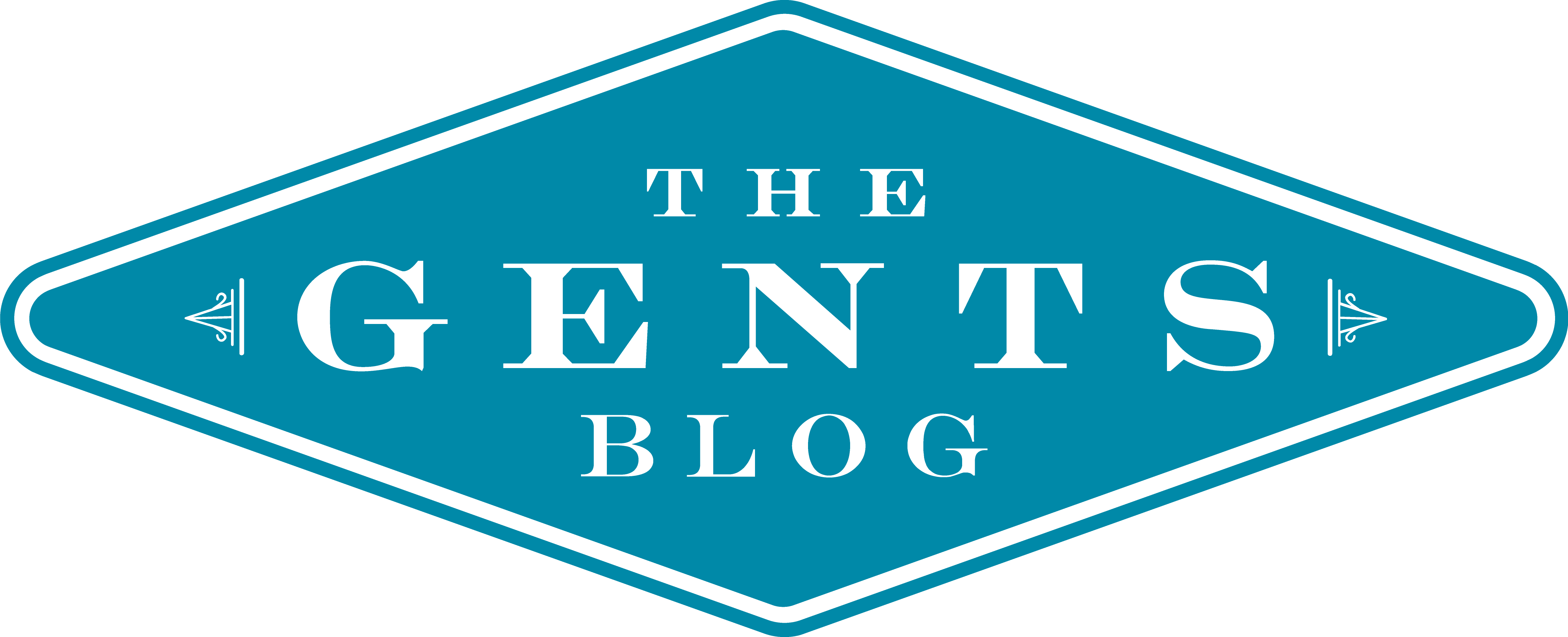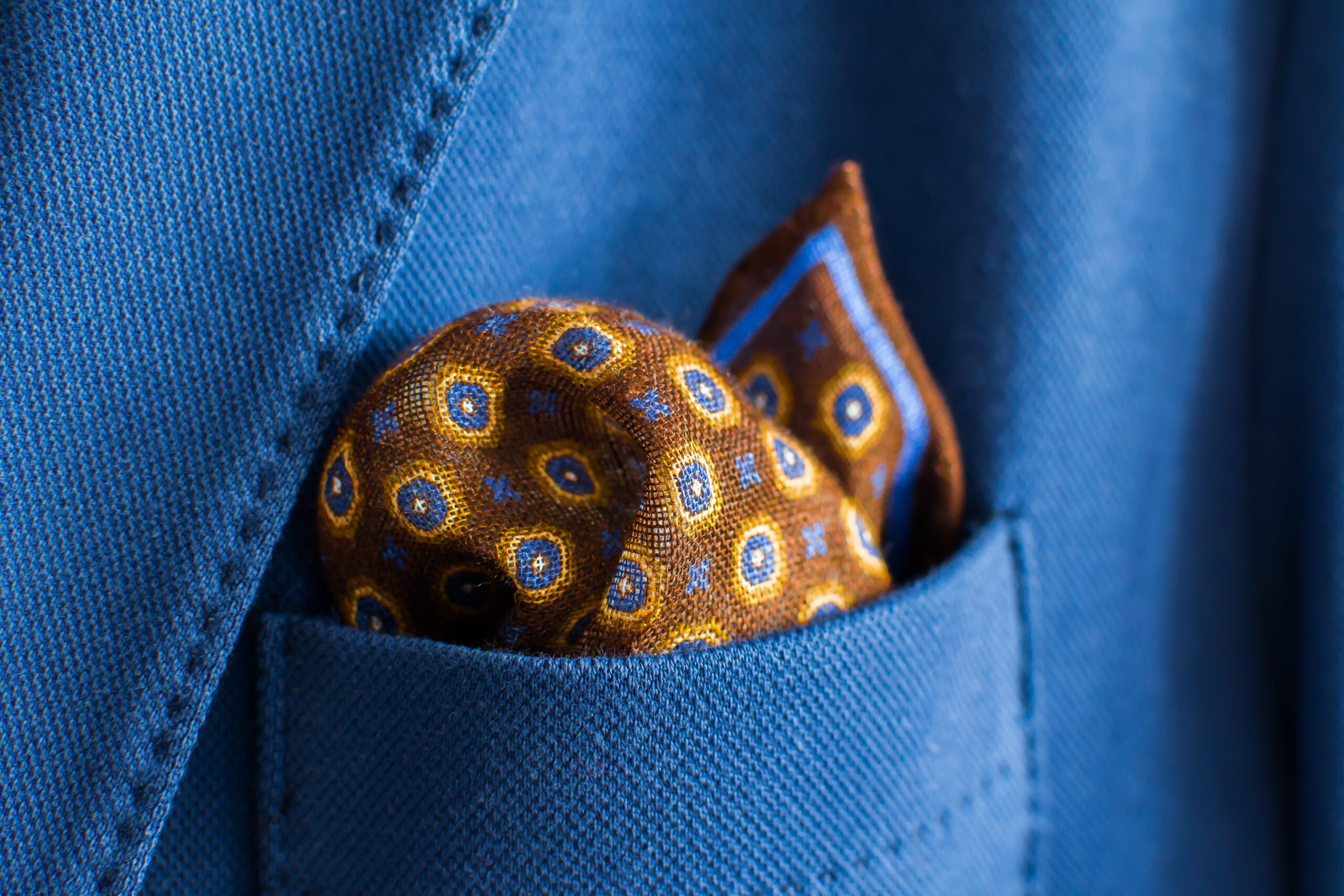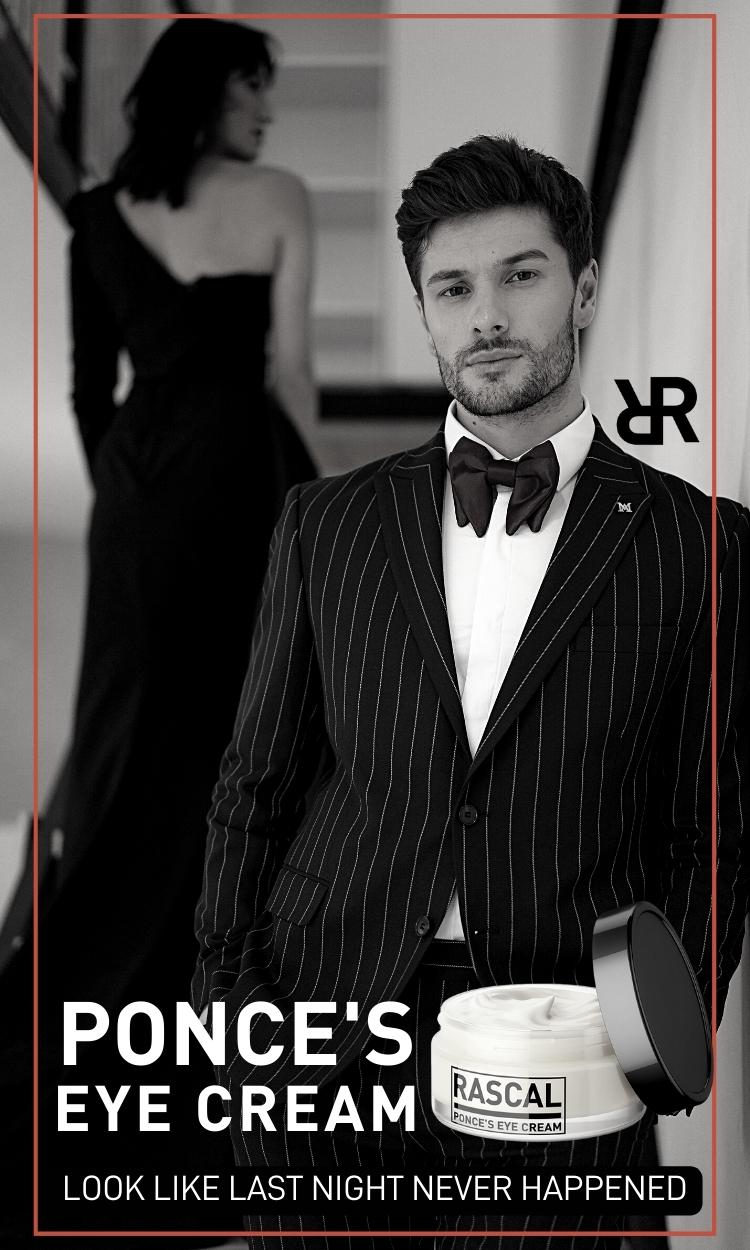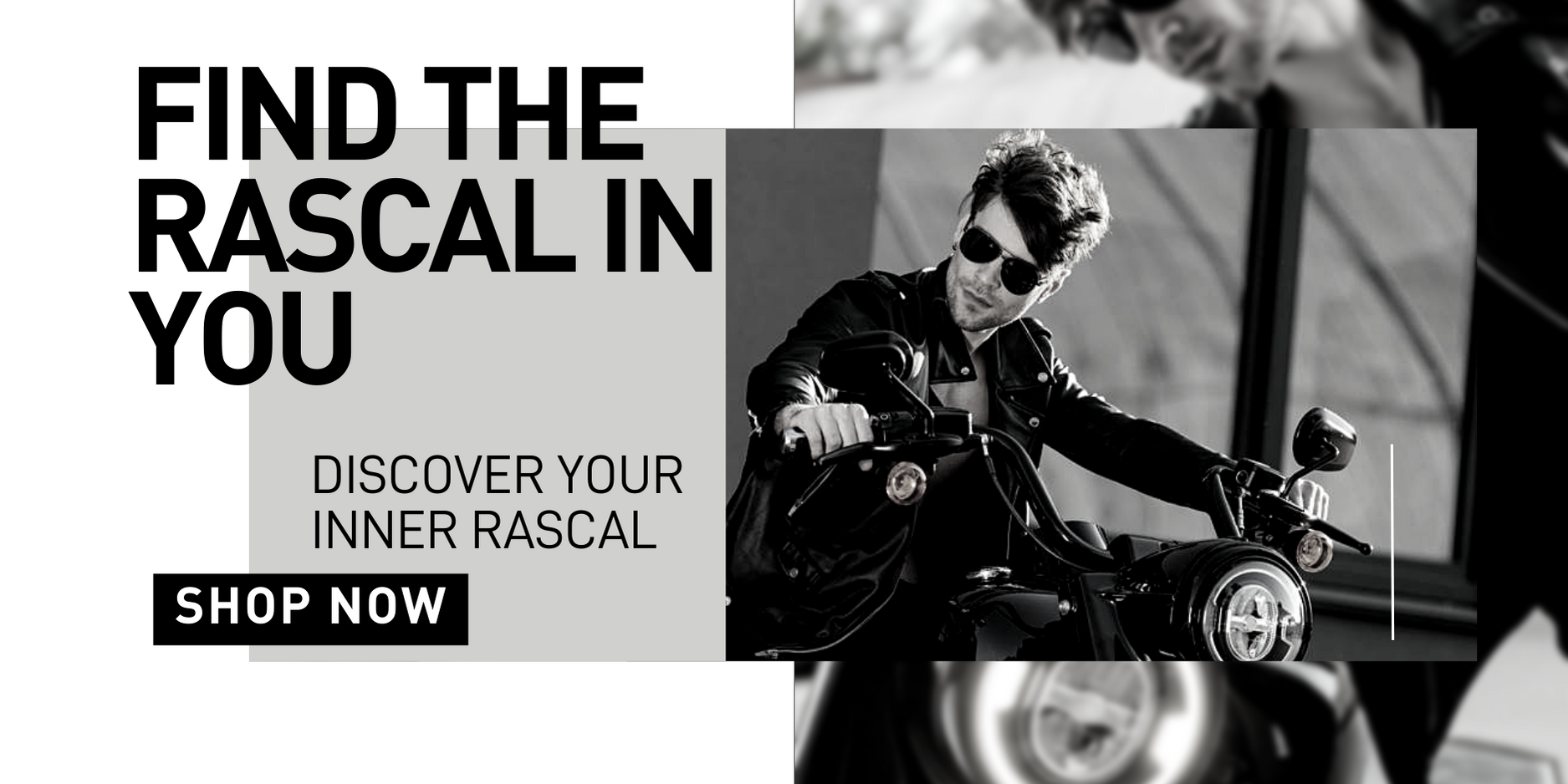Even as Western society opts for more casual wear, items like the pocket square are finding their way back into the closets (and the pockets) of the discerning gent. But before you just grab a stylish looking piece of fabric and put it in your pocket, you’re going to want to know some basics.
Purpose
A pocket square is simply a small piece of fabric that goes into a man’s left side jacket pocket. There is no prescription for its size. The goal of a pocket square is to add an element of personal style to the standard male ensemble. It is meant to be a complement to your clothing, not a matching element.
Fabric, Color, and Design
As noted above, this should be a complementary element, and definitely not something that matches your tie. This is not some snobbish rule, but rather a practical point. The whole point of the pocket square is to add an element of style, not simply be a portion of your tie growing out of your pocket. If properly chosen it can help bring your whole outfit together, and at times can be a helpful element should you choose to go without a tie. The fabrics can be seasonal (silk is good year round but linen is good for spring or summer and flannel and wood are good for autumn and summer) and matched to your jacket or shirt, and the colors can complement any part of your ensemble, be it your shirt, tie, or jacket.
Beginners should have some solid white and blue pocket squares, and then, if feeling adventurous, they should start adding different patterns to match their personalities and clothing.
Cost
Among your visible articles of clothing, this will be the least visible, as the majority of it is tucked below your pocket line. So, a basic rule is: don’t spend too much. You can get excellent pocket squares for under $20. When you are shopping, do not make a judgement to purchase solely on how you see the pocket square folded on display. Try it yourself. There’s nothing more likely to deceive than a pocket square you haven’t tried.
Ways of folding
There are two basic ones all gents should know: the square and the poof.
The clue is in the name: square. If you open up your pocket square and fold it back down and into a square, it will fit nicely into your pocket. This is the most basic – but also the most “formal” look. Clean, classic, and minimalist.
The opposite of the square fold is the “poof” which is exactly what it sounds like – it just pops out of your pocket almost as if you casually mopped your brow, then tucked it back in very stylishly. It says relaxed and at ease.
If you want to look at some two other fancier possibilities, check out this how-to video from the folks at Harry Rosen.
Extra credit
There’s an old saying, “one for show, one for blow,” in regards to handkerchiefs. The pocket square was the “for show” and the handkerchief was there to wipe away sweat or a spill. Having one handy means that you don’t have to look for a towel or napkin when you might need one, and yes, in case you need to sneeze or blow your nose.
Have you ever worn a pocket square? Do you think you might try after reading this article? Share your thoughts in the comments below and receive a 25% off coupon for purchases in our retail locations.




I have recently jumped on the pocket square band wagon and have gotten a lot of compliments. It certainly is something you have to be careful with, otherwise, you can end up looking garish. The style of fold, pattern, color and material must all be considered in combination with the coat you are wearing (much like a tie). I often go without a tie which, in my opinion, makes it much easier to pick out a pocket square to wear because that is just another element to consider. My advice would be to get out there and try it out. Start conservative and work up your comfort level.
I ALWAYS rock the square when I’m wearing a blazer. That’s why they put pocket there! Use it!